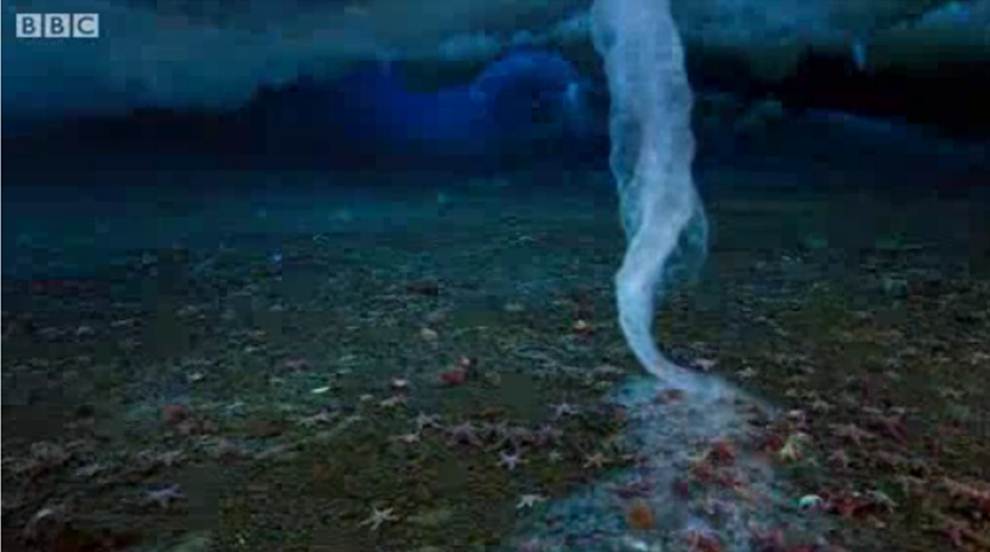UPDATE: Please note - the picture below is a picture, not the video :) The link to the video is later in the post…
Yep, that is, indeed, a real word.

The Beeb, bless their cotton socks, has released some excerpts from their new the new BBC/Attenborough series Frozen Planet. Frozen Planet deals, as one might expect, with “the frozen wildernesses of the Arctic and Antarctic”, and while I’ve not seen it, it looks absolutely stunning.
We’d expect nothing less of them.
And the footage in particular to which this post refers shows a brinicle forming. Brinicles - a portmanteau of brine and icicle - are the water equivalent of, well, icicles. Brinicles are unusual, and form very differently from their atmospheric counterparts.
Previously referred to as ice stalactites, this footage is the first time the creation of one’s ever been captured, hence all the excitement. The footage was taken at Little Razorback Island, near Antarctica’s Ross Archipelago.
How do brinicles form?
As many of you will be aware, the act of freezing water forces most of the impurites, including salt, out of it. Not all, but most. The salt* that’s been excluded from this freezing water then dissolves into the surrounding water, decreasing its freezing point and adding to its salinity (and hence density).
So this surrounding water sinks, creating in the process brine channels through which this supersaline, supercooled water sinks away from the ice. If these brine channels happen to be concentrated in an area, then this supercooled supersaline water sinks through the water column (due to its higher density) in a plume, and starts to form an ice layer around it as the surrounding water freezes due to contact with the plume.
Et voila.
And brinicles are, it would appear, self-sustaining - that layer of ice forms a layer of insulation (think igloos!) which prevents the supercooled water from warming up and diffusing - indeed the opposite occurs, and brinicles grow ever deeper (well, as much as is permitted by water depth, ice growth, the water itself etc).
What happens when it reaches the seafloor?
It can freeze critters, essentially. If a brinicle reaches the seafloor, that superdense water will, of course, continue to flow along the seafloor in whatever direction is downward (in terms of slope), and ice will form around it. Once it’s flowed as far down as it can, it then pools - any bottom-dwelling creatures caught in that pool of ice and supercooled water will be trapped and freeze to death.
More in this BBC article.
Of couse, there’s a Wikipedia article, too (yay Wikipedia!)
—-
And, of course, a reminder - this week’s TOSP is out, and Elf and I witter on about a large number of interesting science-related goodness. Check the TOSP 11 post for more details!
—-
* Oops. The original post used ‘ice’ instead of ‘salt’ - a simple typo on my part. Apologies for any confusion, and thanks to George for pointing out my error!